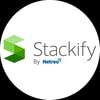Overview of React
What is React?
React is a declarative, component-based JavaScript library for building user interfaces, primarily maintained by Facebook. It's designed to help developers create fast, scalable, and maintainable UIs for web applications. React promotes the development of reusable components that encapsulate their own logic and rendering, making it easier to manage complex applications. The core concept of React revolves around the virtual DOM, which optimizes UI rendering and improves performance.
History and Evolution of React
React was introduced by Facebook in 2013 to address the challenges of building dynamic and high-performance user interfaces. Its unique approach to UI development quickly gained traction among developers.
Key Milestones:
- 2013: React was open-sourced, introducing the concept of the virtual DOM and a component-based architecture.
- 2015: React Native was released, allowing developers to use React for mobile app development.
- 2016: React Fiber was announced, a complete rewrite of React's core algorithm to improve performance and add new features.
- 2017: React 16 (Fiber) was released, introducing new concepts such as error boundaries, fragments, and portals.
- 2019: Introduction of React Hooks, enabling state and lifecycle management in functional components and promoting code reuse and simplicity.
Comparison with Other Frameworks/Libraries
Angular:
- Comprehensive Framework: Angular, developed by Google, is a full-featured framework that offers a wide range of built-in features, such as two-way data binding, dependency injection, and a powerful templating system.
- Structured and Opinionated: Angular's strong conventions and structure make it ideal for large teams and complex projects but can be restrictive for smaller, more flexible projects.
Vue:
- Progressive Framework: Vue is designed to be incrementally adoptable, making it easy to integrate into projects of any size. It combines features from both Angular and React, offering a gentle learning curve.
- Flexibility and Simplicity: Vue's simplicity and ease of integration make it a popular choice for both small and large-scale applications, providing a balance between structure and flexibility.
Why Choose React?
Benefits of Using React
-
Component-Based Architecture:
- React's component-based architecture encourages the creation of reusable UI components that manage their own state and rendering logic. This modular approach enhances code maintainability, scalability, and readability, which is essential for large-scale applications.
-
Virtual DOM:
- React's virtual DOM optimizes rendering performance by minimizing direct manipulations of the real DOM. By calculating the most efficient way to update the UI based on state changes, React ensures a fast and responsive user experience.
-
Declarative UI:
- React's declarative paradigm simplifies UI development by allowing developers to describe how the UI should look for any application state. This abstraction makes the code more predictable, easier to debug, and reduces the complexity of managing UI states.
-
Rich Ecosystem and Community:
- React boasts a vast ecosystem of tools, libraries, and community support. From state management solutions (Redux, MobX) to form handling libraries (Formik, React Hook Form), React's ecosystem provides robust solutions for various development needs.
-
Cross-Platform Development:
- React Native extends React's component-based approach to mobile app development, promoting code reuse across web and mobile platforms. This cross-platform capability accelerates development cycles and reduces maintenance efforts.
-
Backward Compatibility and Stability:
- React's commitment to backward compatibility ensures that upgrades and new features can be adopted without significant rewrites. This stability is crucial for long-term projects and enterprise applications.
Case Studies of Successful React Applications
-
Facebook:
- React was initially developed for Facebook's News Feed to address performance and maintainability challenges. Today, React powers the entire Facebook web application, providing a dynamic and responsive user experience at scale.
-
Instagram:
- Instagram, a subsidiary of Facebook, leverages React to manage its web interface. React's efficient rendering and component-based architecture help deliver a seamless and interactive user experience, crucial for a social media platform.
-
Airbnb:
- Airbnb uses React to build and maintain its web platform, benefiting from React's modularity and performance optimizations. React's component-based architecture allows Airbnb to create reusable UI components, ensuring consistency and maintainability across the application.
-
Netflix:
- Netflix employs React for its client-side user interface, enhancing startup speed and runtime performance. React's efficient rendering and modular architecture enable Netflix to deliver a smooth and responsive experience to millions of users worldwide.
-
Uber:
- Uber relies on React for its web application, utilizing its component-based structure to build scalable and maintainable user interfaces. React's performance optimizations are crucial for Uber's real-time functionalities and dynamic user interactions.
-
WhatsApp Web:
- WhatsApp Web, another Facebook product, utilizes React to provide a seamless messaging experience on desktop browsers. React's efficient state management and rendering capabilities ensure a responsive and reliable user interface.
Conclusion
For lead developers, a deep understanding of React's principles and ecosystem is essential for building modern, high-performance web applications. React's component-based architecture, virtual DOM, and robust community support make it a powerful tool for developing scalable and maintainable UIs. Leveraging React's benefits allows you to build sophisticated applications and lead successful projects like those at Facebook, Instagram, Airbnb, Netflix, and Uber. With React, you can drive innovation, ensure efficient development processes, and deliver high-quality user experiences.






Top comments (0)